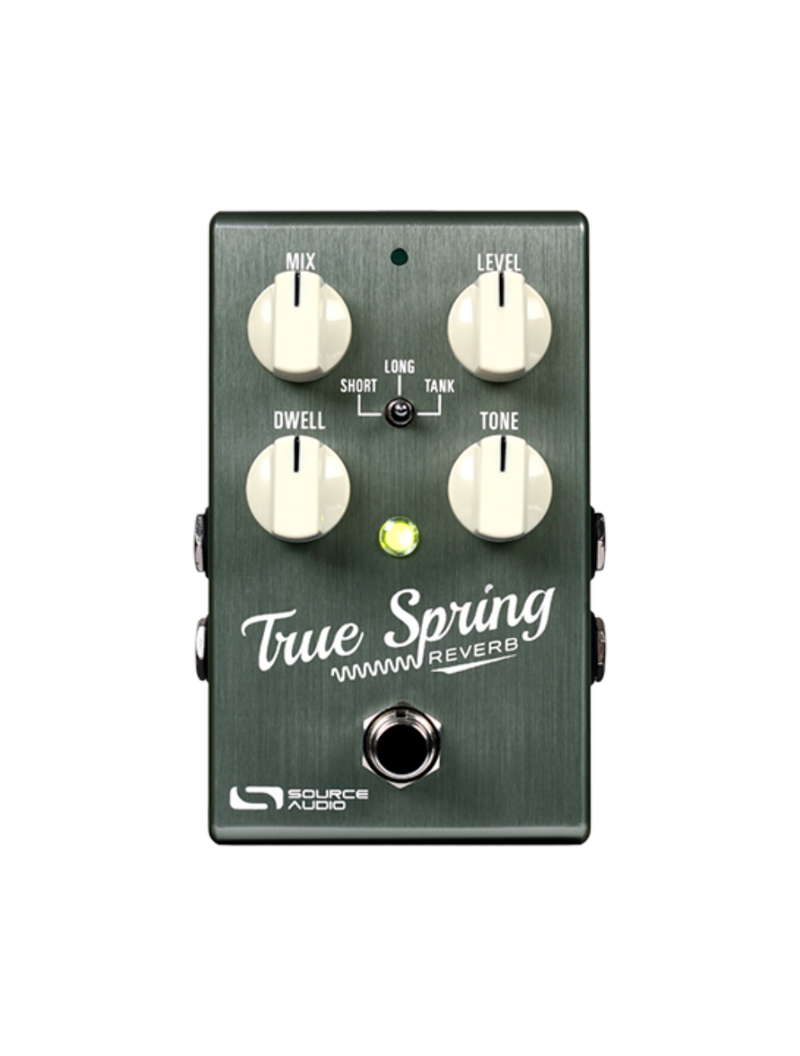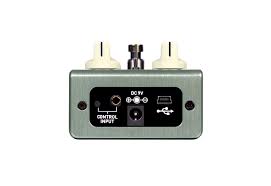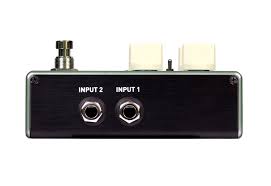


The True Spring's reverb effects are based on a mechanical design created by the Hammond Organ Company™ in the late 1930s. This austere design uses a pair of input and output transducers to inject an instrument's dry signal into an actual set of spring coils and capture the very distinct reverberations as the sound bounces through the springs. Of course, Leo Fender adopted this design in the 1960s with some of his "blackface" amplifiers and a revolution was born.
Short Spring Reverb: Inspired by the unmistakable twang of 1960s "blackface" amplifiers. After extensive research, we found enormous diversity in the spring reverb sounds of a variety of amps. Some offered a tighter, less lively sound while others sounded "more drip", with longer sustain and livelier reverb trails. The SHORT Spring reverb engine delivers a tight sound with fast decay and smooth trails.
Long Spring Reverb: Produces long, deep reverb decays with noticeable “drops” and very lively trails. The LONG Spring engine is not as spectacular as the TANK Reverb engine, but offers an extremely authentic representation of some of the liveliest reverb tanks found in vintage combo amps.
Tank Spring Reverb (Outboard Spring): Captures the characteristic effect of '60s tube outboard spring tanks. The sound of reverb tanks like the classic Fender 6G15™ is characterized by their "drippy" attack and lively drag. This original dual-spring design produces a bouncy, delay-like sound inseparable from the early days of surf rock and spaghetti western soundtracks.
THE TREMOLOS
The True Spring Reverb also lets you combine any of its signature spring reverbs with one of the pedal's three tremolo effects. The True Spring's tremolos are the same organic effects that originally appeared in our Vertigo Tremolo - the winner of Guitar Player's "2015 Hall of Fame" and Premier Guitar's "Premier Gear Award."
Opto Tremolo: Optical tremolo (aka "Photocell Tremolo") is the effect found in many combo amps from the 1960s. This version of tremolo relies on a neon bulb and a light-dependent resistor called " optocoupler”. The non-symmetrical aspects of the light and optocoupler give the tremolo a distinct jerky character.
Harmonic Tremolo: This unique effect first appeared in Fender™ “brownface” amps manufactured between 1959 and 1963, which alternately modulated the bass and treble frequency levels of the audio signal. The result is a very pleasant and complex tremolo with characteristics reminiscent of a phaser.
Bias Tremolo: This approach to tremolo involves using an LFO to modulate the bias voltage of an amplifier's tubes. This essentially pushes the tubes in and out of saturation. The result is smooth amplitude modulation with slight overdrive created by tube saturation.
FEATURES
Three distinct spring reverb and tremolo effects.
Two modes of operation - Use the pedal in standard mode for a classic (non-preset) pedal experience or activate preset mode and save a user preset (including reverb/tremolo effects and button positions) in each of the three toggle switch positions.
Flexible Stereo Routing - The True Spring is equally at home in a mono or stereo rig. The pedal's stereo inputs and outputs offer a variety of routing options such as stereo to stereo, mono to mono, mono to stereo, stereo to mono sum, and external loop mode.
Universal Bypass — Select Active Analog (buffered) or True Bypass.
Secondary Tremolo Controls - Press and hold the CONTROL INPUT button to access the True Spring's tremolo effects (DWELL button controls tremolo DEPTH / TONE controls tremolo RATE / toggle switch selects tremolo type) .
Expression Control - Compatible with Source Audio expression pedals and the Hot Hand 3 universal wireless effects controller. Assign up to three simultaneous parameters with editable depth and direction.
External Tap Tempo – Use the Tap Source Audio switch to tap the tremolo rate with a choice of four different time divisions (quarter, eighth note, triplet and sixteenth).
Engage and bypass external tremolo - Use the audio source jack switch to enable or disable tremolo effects in addition to an active spring reverb.



